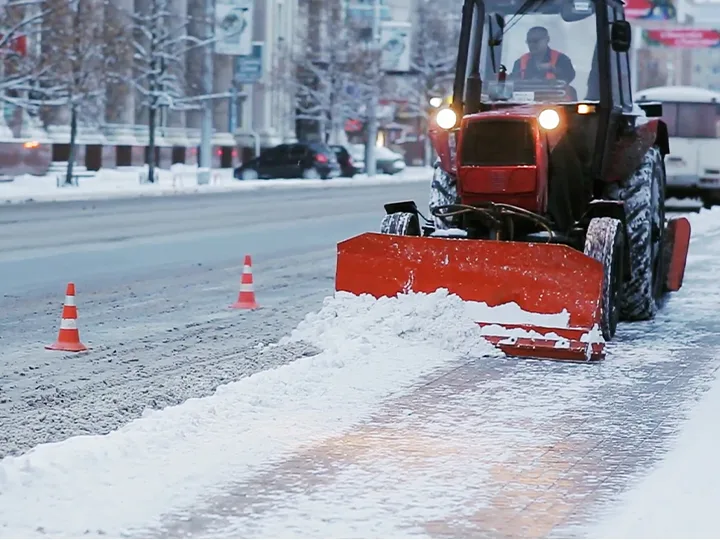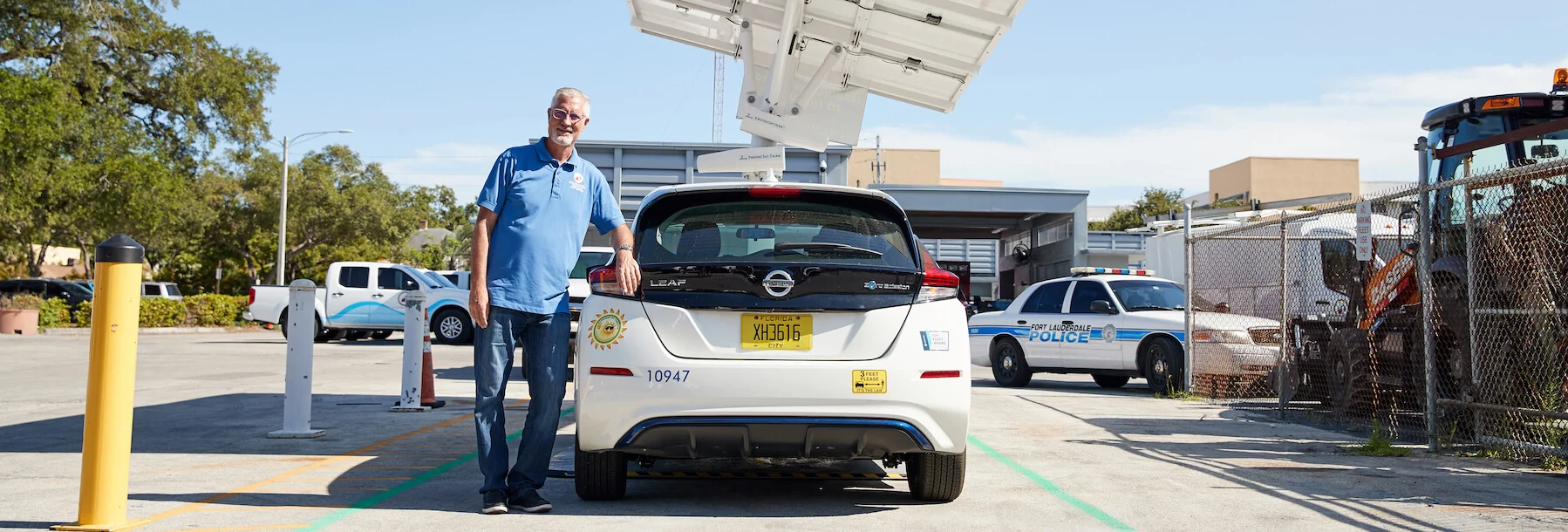
Get the latest from Samsara
Subscribe nowFuel spend is the second leading fixed expense for fleets and on average amounts to 60% of the total operating cost. If you’re a fleet manager, this means an uptick in gas prices or excessive vehicle idling can have a major financial impact on your entire operations.
So, what can you do to make sure your fleet is managing their fuel wisely?
"It starts with knowing how much you're spending and why," said Samsara principal product manager Robert Bales. "Fleets that can identify and reward drivers with good habits or uncover and avoid behaviors that waste fuel will have an advantage. Getting this insight across your fleet is key to understanding costs and learning how to reduce them."
Read on to learn four ways your telematics solution can provide visibility into how your vehicles are using gas and help your fleet optimize fuel use.
1. Reduce fuel waste caused by driver habits
The average long-haul truck will idle anywhere from six to eight hours a day, for as many as 300 days a year. And when a driver’s speed suddenly increases or decreases, the vehicle can consume 20% more fuel. These behaviors can add up to thousands of hours of fuel wasted annually.
To help your fleet reduce idling and curb habits that cause waste, consider a telematics solution that can provide insights into your vehicles’ fuel and energy use. Telematics tools such as Fuel & Energy Reports and Idling Alerts can help you better understand fuel usage trends across your fleet. You can then determine problem areas and set goals based on what will have the biggest impact on your business.
Common driver habits like acceleration, deceleration, coasting, cruising, and more can also have a major impact on your fuel efficiency—and your bottom line. These driving habits, though seemingly inconsequential, can in aggregate have a significant impact on fuel expenses and vehicle lifespan.
By following and tracking the results of these driving habits with the Samsara Fleet Efficiency Report and score, you can gain insights that surface inefficient driving habits, incentivize good behavior, and facilitate effective feedback.
Understanding these data insights helped Samsara customer and poultry processor Mar-Jac Transportation, LLC. take action with their fleet. “Coaching drivers on their driving drove the change for us,” said Alan Hewell, a fleet manager at Mar-Jac Transportation. “We’re well above a mile a gallon since we started and we’ve been able to set parameters for incentive and fuel bonus programs.”
Learn more about Samsara2. Decrease instances of fuel theft
With fuel theft on the rise, it can be challenging to know if all your fuel transactions are purchases from authorized vehicles in your fleet. Without properly tracking data to understand which vehicles are at which stations at what times, there can be a lot of guesswork involved in confirming fuel purchase history. Without data, this can cause fraudulent expenses that might be difficult or time-consuming to verify.
Luckily, the right telematics solution can provide precise information on your driver's fueling location, identifying not only the city or town where they fueled, but the exact station. By using Samsara’s real-time GPS tracking to identify a vehicle’s location, Fuel Reports can show whether or not a fuel transaction was completed by a verified vehicle in your fleet.
Plus, you can now integrate fuel card transaction data from FLEETCOR-issued brands, such as Fuelman and Comdata,with Samsara for a more comprehensive view of your fleet’s fuel economy. This type of integration can help you identify suspicious card activity and reduce fraud by flagging transactions that don’t correlate with GPS coordinates at the time of purchase. Not only can these additional insights help you verify fuel purchases, but they can help you identify inefficiencies across your vehicles and drivers.
These insights can also indicate instances of fleet skimming—a form of fraud that replaces a credit card scanner with a skimming device that electronically captures cardholder data.
Look for a telematics solution that flags unauthorized purchases, caused by misuse, theft, fraud, or other types of fraudulent fuel activity. With GPS location data that integrates with fuel card purchase data, for example, you can easily prove a purchase was fraudulent if you see a fuel transaction made in a location a vehicle was never in.
Additional cases of fuel theft can be flagged through telematics with alerts that automatically notify you when fuel level decreases by a predetermined percentage in a certain amount of time—something that can be hugely valuable in understanding whether theft took place. If, for example, the amount of gas pumped into your vehicle at one time exceeds the capacity of your tank, it could be a case of fuel theft.
3. Monitor DEF (Diesel Exhaust Fuel) levels to refuel more efficiently
Ensuring each vehicle’s DEF level is properly maintained is an important step to help your business avoid emission mandate violations. Diesel exhaust fuel or DEF is an ammonia-based liquid that’s sprayed into the exhaust stream of a diesel-powered truck to reduce the amount of nitrogen emissions created by diesel engines. If vehicles don’t have the accepted level of DEF in their vehicle to meet American or European emission regulations, they are forced to essentially cease operation of that vehicle until its refueled.
But evading a violation is just part of the equation. A lack of visibility into fuel use and DEF levels can create inefficiencies that hinder or prevent fleets from completing jobs, and can even lead to thousands of dollars in engine repair costs when neglected for too long.
To help your fleet maintain proper DEF levels, telematics providers like Samsara can offer real-time insights into DEF levels with alerts that notify you when DEF goes below a predetermined threshold. By monitoring DEF, fleets can proactively refill before maintenance is compromised or worse—vehicles need to be taken off the road.
This additional insight is crucial to Joseph Casuccio, the Director of Operations at nationwide milk hauling company Red Stag Logistics. In order to get fresh milk products to customers, Red Stag Logistics needs to stay on schedule and DEF level complications are something the business simply doesn’t have time for.
“If you have a vehicle that has a 98% fuel level but a DEF level below 50, you’re going to create an additional stop for your driver,” said Casuccio. “You’re going to have to break speed, downshift, and potentially come into heavier traffic to refill—on top of that, you’re wasting fuel and inching closer to an HOS violation.”
But with Samsara, Red Stag Logistics has real-time visibility into both fuel and DEF. They simply use the Fuel Report to understand where fuel and DEF levels are so they can make sure vehicles are routed as efficiently as possible while avoiding unnecessary stops.
“There’s no reason to not take advantage of one complete stop to fuel everything up.” Casuccio said. “Samsara let’s us easily do that.”
Learn more about Samsara4. Identify electrification suitability
In certain instances, the most effective way to manage the fuel efficiency of a vehicle is to electrify. Electrification can be a good option for fleets looking to significantly lower operational costs and can be particularly valuable if your fleet needs to meet certain emission or TCO requirements.
But how do you assess electrification suitability for your fleet and what data do you need to determine which vehicles in your fleet make the most sense to electrify first?
Generally speaking, you want to prioritize electrification for vehicles that are furthest along the vehicle life cycle based on miles logged, or vehicles with the highest operational cost in terms of maintenance and fuel. If you’re still unsure, consider the following factors when choosing to electrify:
Does your vehicle have consistent parking patterns? If a vehicle parks in the same or similar place whenever it’s not in use, it could be a strong candidate for electrification due to consistent charging location.
How long is your vehicle’s route? If it’s too short, electrification may not be worth the investment from a fuel savings perspective and if the route is too long, vehicles run the risk of running out of charge.
Is your vehicle a light-duty vehicle? Since light-duty electric vehicles are currently more commercially available, you might not want to consider electrifying heavy-duty vehicles first.
EVs come with their own unique operational challenges, and your telematics provider should give you the tools needed to manage an electric fleet. To learn more about how Samsara can help your fleet transition to electric, read more about our EV tools and offerings.
Manage your fuel use with Samsara
Samsara has helped customers improve energy efficiency and reduce fuel use across their fleets, saving over 24 million gallons of gasoline—or $80 million in cost savings—annually. To learn how Samsara can help your fleet improve fuel and energy efficiency with comprehensive and actionable fuel data, reach out for a free demo or trial today.
Learn more about SamsaraGet the latest from Samsara
Subscribe now

















